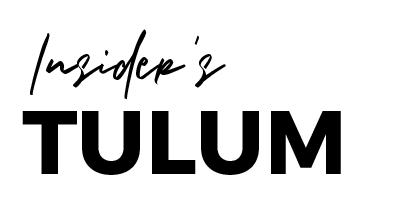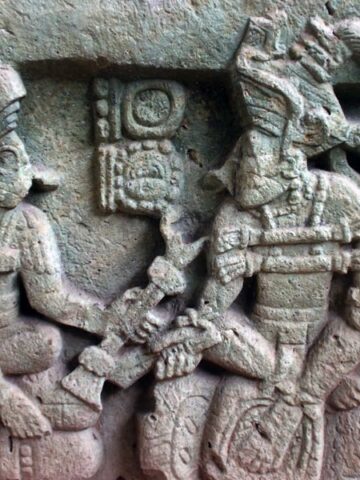Planning a trip to Tulum and want to learn more about the importance of Mayan Gods and Goddesses? Here’s what you need to know.
Take a visit to any of the temples in Tulum and you’ll likely spot drawings of Gods and Goddesses. These deities were an important part of the Maya’s culture – and some still are today – but what do they all mean?
Each of the Mayan Gods and Goddesses stands for different things, and it was widely believed that praying to these Gods and Goddesses, as well as partaking in rituals and sacrifices, would satisfy the Gods and Goddesses’ desires.
Ready for a little history lesson? These are the Gods and Goddesses you need to know.
8 Mayan Gods & Goddesses You Should Know About
Kukulcan – The Feathered Serpent God

Let’s kick things off with one of the most famous Mayan Gods, Kukulcan. Known as the deity of water and wind, he dates back to the late Preclassic Period.
The feathered serpent God is the most well-known Mayan God of the Maya pantheon. The Aztecs called him Quetzalcoatl, so it’s believed that Kukulcan and Quetzalcoatl were the same beings.
Kukulcan was especially important for the Yucatec Maya and all Mesoamericans, he was a creator God who also brought rain and winds. This Mayan God was worshipped all over the Mayan world, but the center of worship for this God is Chichen Itza, a mesoamerican step pyramid.
Ix Chel – The Mayan Moon Goddess
Ix Chel is one of the most important Goddesses in the vast Maya Pantheon from both the classic and late post-classic period (250-1550AD).
She was the wife of Itzamna who was one of the most powerful Gods– a real power couple.
Ix Chel is still worshipped today, and she is often represented as a young and beautiful seductress who is known for fertility, marriage and love. She was also known as the Goddess of harvest and weather because she has powerful lunar cycles.
Ix Chel harnessed the yin and yang of female power and was often represented as a wizened old woman who held the power to create and destroy the earth.
The annual Sacred Maya Journey is a ritual ceremony held in Xi Chel’s honor on May 26. Hundreds of Mayans canoe across the Caribbean sea to Cozumel Island to visit a temple dedicated to Ix Chel to receive blessings.
Itzamna – The God of The Sky

Often depicted as a wise but toothless old man, Itzamna is considered the founder of the Mayan culture, astrology and writing. In other words, he’s a pretty big deal.
Itzamna is one of the most important Mayan Gods, known as the God of the sky and the God of wisdom– hence the old wise man. He was the son of the creator God Hunab Ku and the husband of Goddess Ix Chel (more on her in a sec).
The old wise man was considered a healer who could also resurrect the dead and there are many stories and myths about him and his heroic ways. Some stories say he was a priest who founded the majestic city of Chichen Itza and producer of the first characters (hieroglyphics) which were used as means of communication in the region.
Buluc Chabtan – The God of War
You wouldn’t want to get on the wrong side of Buluc Chabtan, the Mayan God of war, violence and sudden death. Mayan people prayed to Buluc Chabtan for success in war (and to stay on his good side – because nobody wants to die a sudden death).
Blood was viewed as nourishment for the Gods and human life was the ultimate offering to a deity, so it’s no surprise that many people were sacrificed to satisfy this deity regularly.
In art, Buluc Chabtan is usually portrayed with a thick black line around his eyes and down one cheek.
It’s not uncommon to see him setting fire to buildings and stabbing people with a spit which he uses to roast them over a fire. It comes as no surprise that he is often pictured with Ah Puch, the Mayan God of Death.
Chaac – The Rain God

Chaac was the rain God, which the Mayan people viewed as important given the strong agriculture they thrived upon. He was also associated with thunder, lightning and storms, and the Mayans believed Chaac struck the clouds with his lightning ax to create rain and thunder.
He was an important deity for the Mayans who thought he brought rain – crucial for their crops and other agriculture. Even today he is considered the protector of agriculture and is often included in harvesting rituals.
He’s shown with a huge nose, bulging eyes and a body with reptile-like scales (charming). The representation of Chaac can be found in many Maya archeological sites like Uxmal and Chichen Itza.
Ah Puch – The God of Death
In the Mayan religion, Ah Puch is just one of the names associated with the aspect of death – Ahal Puh, Cizin and Yum Cimil are some others used.
Ah Puch was the ruler of the Mayan underworld and Metnal (the ninth level of the Mayan hell). He wasn’t a kind God, that’s for sure – he was often likened to the devil.
Because of this, he is usually depicted as being in a state of decay with a skeletal mask, a protruding belly filled with rotting insides and a creepy necklace hanging with eyeless sockets.
Ah Puch thrived on human sacrifice and was often seen with a dog or an owl, and he was well respected in Chichen Itza. So well respected that people were thrown into a cenote as human sacrifices for Ah Puch.
He loved making people suffer and often took people’s souls and kept them in the underworld where he tortured them. He was also known as the God of childbirth and beginnings… but in a plot twist, he works against the Gods of fertility.
Kinich Ahau – The Mayan God of The Sun

Often represented by a jaguar, eagle or deer – animals that represent power – Kinich Ahau was the sun God of Maya culture and it’s believed that he was a generator of light, time, heat and the four directions that universe had in its expanse. A pretty powerful guy.
One of the most common representations of Kinich Ahau is one of an old man dressed in expensive-looking garments making a mocking gesture with his crossed eyes.
Kinich Ahau was so important to the Mayan culture that many used the word Kinich in their titles. The Mayan God of the sun was worshipped through dances and sacrifices in order to obtain his protection.
Ek Chuaj – God of Cacao
Ek Chuaj, sometimes known as Ek Chuah, was the God of merchants and cacao. All hail the choccy God!
Mayan Gods often have duality and can represent more than one thing, Ek Chuaj is one of those Gods.
He was also the God of war, chaos and destruction. His evil side was represented by a man that worked as a lance, he had a large cane and carried various items on his back. His warrior side always showed Ek Chuaj’s darker spirit, and he was often pictured fighting and defeating his enemies – as well as being defeated by other error Gods himself.
During the month of Muan, offerings were made to Ek Chuaj relating to cocoa farmers. Dogs dyed with the color of cocoa were sacrificed along with blue iguanas; these offerings were later consumed by the Maya.
List of Mayan Gods & Goddesses
| Kukulan | The creator God who brought water and wind. |
| Itzamna | The God of the sky, wisdom and a healer. |
| Ix Chel | The Mayan Moon Goddess of fertility, marriage and love with powerful lunar cycles. |
| Ah Puch | The God of death. |
| Bulac Chabtan | The God of war, violence and sudden death. |
| Chaac | The rain God who could command lightning, thunder and storms. |
| Kinich Ahau | The God of the sun and generator of light, time and heat. |
| Ek Chuaj | God of cacao and the God of war, chaos and destruction |

